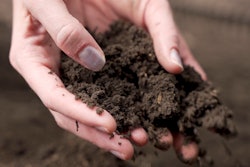
Weeds can be unsightly in an otherwise perfect, healthy lawn. Not only are they sometimes ugly, but they also compete with your lawn for space, sunlight, water and other nutrients. One of the most notorious weeds known for its difficulty to control is crabgrass. If your customers are some of the unlucky homeowners who have crabgrass in their lawn—don't worry. Read on to learn more about how to get rid of crabgrass.
What is crabgrass?
Along with goosegrass, crabgrass is a pervasive weed found throughout the continental U.S. that many lawn care operators struggle to control.
As an annual weed, crabgrass remains present in the landscape for one growing season, which usually begins in the late spring and early summer after the soil temperature has reached a temperature of 55 to 60 degrees F for more than five days.
Once the plants germinate, they will continue to grow until the days begin to shorten, causing them to enter a reproductive stage. During this time, plants produce seed (up to 150,000 per plant) until the first frosts of the fall hit and knock them out.
Even if crabgrass isn’t visible in your clients' lawns during the fall and winter, if the plant was able to set seed, prepare to begin fighting it again in warmer weather.
Identification
Appropriately named, crabgrass grows close to the ground and has branching stems resembling crab legs. Large crabgrass tends to have a dense coating of hair while smooth crabgrass does not. In smooth crabgrass, you can occasionally spot a pinkish red center where the grass is growing from.
A crabgrass seed head grows from different parts of the stems and has soft little spikes growing from them.
How to get rid of crabgrass
If you’ve identified crabgrass early on and only a few weeds are present, it can be pulled by hand and may not grow back again. However, if crabgrass turns into a recurring problem or is too extensive to pull by hand, many chemical options serve as crabgrass killers. Some methods for controlling crabgrass are by using a preemergent or postemergent herbicide. Both types are typically necessary for controlling crabgrass since it’s such a tricky weed.
Start by using a preemergent herbicide to prevent crabgrass
Pre-emergent herbicides are used to prevent weeds from appearing while postemergents are used to treat currently existing weeds. Use preemergents before the first frost in your area in the fall and before soil temperatures reach 70 degrees F.
Preemergents are often the most effective method for controlling crabgrass. Once it appears in your lawn, it becomes harder to control.
Use a postemergent herbicide when weeds are currently present
If crabgrass has already established itself, the question then becomes “what kills crabgrass?” A crabgrass postemergent herbicide will be necessary at this point in the game. Even if you applied a preemergent on time, it’s good to apply a post-emergent to kill any current crabgrass weeds before they begin spreading.
If nothing else works, spot treat the weed with a nonselective herbicide.
This is often a last-resort option and should be optional. If you’ve applied both a pre- and postemergent herbicide and still see crabgrass, consider spot treating it with a non-selective herbicide.
Nonselective herbicides will kill any and all vegetation it comes in contact with, which is why you should spot-treat it to kill crabgrass. You’ll use a liquid non-selective herbicide, tank-mix it in a spray-tank and apply directly to the weed with a nozzle.
Selective herbicides, on the other hand, only kill the weeds listed on their product labels. When crabgrass cannot be controlled by maintenance practices alone and a chemical must be applied, make sure to read the label carefully to ensure that it will not cause any damage to your lawn and is compatible with your type of grass.
Nonchemical control of crabgrass
There are many control options available to help ensure that this season is the last time crabgrass invades your lawn. Some natural prevention methods to strengthen your lawn include:
1. Raising the mowing height: This will help keep the soil cool by keeping the sunlight out, making it more difficult for the crabgrass to germinate and take over.
2. Watering deeply once a week: Avoid light irrigation that would allow weed seed to germinate, and make sure your lawn is well watered and healthy before germination begins.
3. Avoid fertilizing in the summer: Make sure fertilizer is applied before the crabgrass begins, this will keep your lawn thick and give it the upper hand.
Can you pull crabgrass?
Yes, you can pull crabgrass by hand and with a small garden shovel. Crabgrass can be hard to remove, so watering the soil around it might make it easier to pull the weed. The only risk with this is that they must be pulled early in the season before crabgrass has enough time to produce a bunch of seed.
With that being said, it’s also better to pull crabgrass if it’s younger. Larger, established crabgrass has seed heads that will drop into the soil and grow more in its place.
When does crabgrass die?
Crabgrass is an annual, meaning the same plant won’t keep showing up year after year. It typically dies when colder weather ensues and once it’s been hit by a frost.
Note: It’s highly recommended to not apply any sort of chemical on the crabgrass during the summer because it can burn and damage your lawn. However, carefully spot treating it with an effective postemergent without letting the chemical touch the grass will also kill crabgrass in the summer. To be super safe, consider surrounding the crabgrass plant with some sort of barrier to prevent it from making contact with your lawn.



















